Fields in the SAP GUI play a crucial role in data collection and management. However, as processes evolve, their descriptions may need to be updated to better reflect their use, improve end-user understanding, adapt to different languages, or prevent errors.

Although the current trend is leaning towards the use of SAP Fiori, many users still prefer and widely use the fields in SAP GUI, so it doesn't hurt to know the step-by-step process to make these changes effectively.
Step 1:
We'll identify the field whose name we want to change. In the example, we'll use a field from the MIGO goods receipt transaction.

Suppose that, in our business process, the “waybill" are called "certification”, so to make the transaction management more understandable to users, we will modify the description of the field “Bill of lading to “Certification”.

Step 2:
The first step is to identify the data element to be modified, that is, the data element of the field.
To consult it, we position ourselves in the field and press F1 so that we access different information about it.
We are interested in the technical data, which we access by clicking the "tools" icon, which will return a screen where we will find the data.

Step 3:
With the retrieved data element, for our example FRBNR1, we will enter into the transaction CMOD.
And we will move on to the next option from the menu “Go to”.

This will take us to the screen that allows us to modify keywords for data elements.
We enter our data element XXXX and click continue.

We locate the field whose description we want to modify.

And we write the new text in them. Depending on where it's displayed, it will take one text or another.

We save and assign a transport order, and when we access the transaction again, we will see the modification in the field.

With adjustments like this, we can, in a straightforward and simple way, help users feel more comfortable in their daily work by improving their user experience with very little effort.

Let's not forget to analyze each of the cases we consider, since these changes don't always work, aren't direct, or affect too many things.

There are times when the data element text is not what the standard SAP screen displays. Other times, the data element text is used in multiple transactions, and the description will be altered in all of them. We may encounter situations where dependencies exist, and the process may become too complicated or impossible.
Conclusion
The ability to modify field descriptions in SAP GUI becomes a strategic tool to improve the user experience, especially in those environments where the system remains the most used interface compared to SAP FioriAdapting language to a company's internal terminology, adapting texts to different languages, or simplifying technical concepts provides direct value: users work more clearly, errors are reduced, and process efficiency increases.
However, not all scenarios allow for simple changes. Sometimes, the text visible on the screen doesn't depend solely on the data element, but on additional customizations or standard settings that affect multiple transactions. This means that a single modification can have side effects in other processes, altering names in different parts of the system or even interfering with ABAP developments that use these fields.
Therefore, before implementing any adjustment, it is key to carry out a impact analysis: Identify where the field is used, validate that the modification won't generate inconsistencies, and check whether the improvement actually adds value to the end user. This way, we avoid unnecessary risks and ensure that the customization positively contributes to operations.
In conclusion, these types of changes represent a simple and direct way to adapt SAP to the real needs of the business. Well managed, they allow teams to feel more comfortable in their daily work and the tool to be better aligned with corporate terminology. However, as with any SAP customization, the key is to find the balance between simplicity, utility and technical sustainability in the long term.
Discover our SAP training
Find out everything on our blog and train in SAP with our Sap S/4Hana Finance Official Certificate.


































